#8x8_shangrila_23 Performing Artists
He Mele Lāhui Hawaiʻi
Qajar Gallery
"It was through Hawaiian music that I was able to appreciate my heritage. The light switch inevitably created this curiosity about things of the past in Hawaiʻi. I was 14 when I was inspired to sing the "old style" Hawaiian, music in which our grandparents were immersed. Then my journey of self-discovery began. Part of my desire was to learn the significance of the sacred name I carry, Raʻiatea. Depending on where you visit in Polynesia, there are various meanings and perspectives of the name. Its literal translation is “far away heaven” and “sky with soft light.”
I am Kanaka Maoli, Portuguese, German, and Welsh. Through ancestral stories passed down generations, our family has traced genealogical ties to Tahiti, Marquesas, Scottland, Aotearoa, and Rarotonga.
He Mele Lāhui Hawaiʻi is a composition that I feel is highly relevant and provides hope for our lāhui today. It was our first national anthem, requested by the last king of the Kamehameha Dynasty, Lot Kapuāiwa. Liliʻuokalani composed this mele in 1866, who wanted to replace the British anthem, “God Save the King.” It is one of my favorite compositions and resonates strongly with the path I am on today.
As a youngster, I remember hearing stories of our hidden aliʻi, changing the false narrative that Kamehameha V had no heir. However, by western standards the child was born illegitimate. Keanolani was the offspring of Lot and his schoolmate Abigail Maheha.
Through my mother the following is my genealogy traced to Kamehameha V...
Abigail Maheha and Lot Kapuāiwa begat Keanolani. Keanolani and Olopua Kamali begat Hyacinth Keōpūolani. Hyacinth Keōpūolani Kamali and John Kali begat Albert Liholiho. Albert Liholiho Kali and Christina Kalā Puahina Vasconcelles begat Olga Pualani. Olga Pualani Kali and Solomon Hanohano Holi begat Henrietta Paʻaluhi Stuart. Henrietta Paʻaluhi Stuart Holi and Zachary Zane Helm begat Carlton Stuart Kaleookalani, Curtis Stephen Kaua, and Raʻiatea Mokihana Maile.
E ola e ola ka mōʻī! "
Raiatea Helm
Two-time Grammy nominee, and multiple Nā Hōkū Hanohano award recipient, Raiatea’s Hawaiian music career spans 20 years. She has released multiple albums, recorded and performed with legendary musicians such as Keola Beamer, Aunty Genoa Keawe, Kealiʻi Reichel, Willie K and Mick Fleetwood. Beginning at a young age, she has taken her love for Hawaiian music and performed throughout the U.S., China, Japan and Tahiti. Raiatea is now recognized as one of Hawaiʻi’s premier female vocalists, and a passionate keeper of the Hawaiian falsetto tradition. She has captivated audiences throughout the Hawaiian Islands and the world, masterfully interpreting traditional Hawaiian songs with classical elegance, poise, and grace. Raiatea has a degree in music from the University of Hawaiʻi at Mānoa and is the first Hawaiian Musical Artist Fellow of the Native Arts & Cultures Foundation. Raiatea currently serves as a Youth Development Outreach Specialist at the Liliʻuokalani Trust in Honolulu, developing music programs for Hawaiʻi’s children.
Uncovered
Dining Room
"If the man is the head of his household, what happens when he is removed? Does the woman fill in as the head? Or does she become uncovered... or unprotected in a world where she's left to fend for herself. This seems to be the case in numerous societies, where the woman is left vulnerable to political trickery, religious extremism and other societal injustices. This piece is a friendly reminder for the uncovered woman to take comfort in her vulnerabilities as they'll eventually turn into her strengths. For this project, I reached out to artist/musician, Dae Han, for his expertise. Dae brilliantly produced the music, played the keyboard, and took on the role as music director. I was really fortunate to also have Antonio Burusso on bass and Nelson Cho on the MPC. Together, we created and performed this piece, titled, "Uncovered"."
Maryanne Ito
Maryanne Ito has the potential to permanently carve her name into the R&B landscape. The Honolulu, Hawaiʻi.-raised soul singer has a panoramic vision for enlightening the world through her music - one which captures the essence of various genres: from Hip-Hop to Neo-Soul, Reggae and Jazz. Her voice, filled with conviction, is rich and textured - and immediately grabs your attention.
Maryanne's debut album "Waking Up" peaked at #4 on the UK Soul Charts, after it was released in 2014. The following year, she clutched the R&B Album of the Year award at the Nā Hōkū Hanohano Awards and won the International Pacific Artist of the Year award in New Zealand for the Vodafone Pacific Music Awards. In 2019, she released "Live at the Atherton" with Honolulu based record label, Aloha Got Soul. The album was nominated for a Nā Hōkū Hanohano award.
Dada (cont.)
Introductory Gallery
My piece, entitled Dada (cont.), is a play on words between the theme continuum and my initial vision of a “continuation” of my musical journey. This project is notably a shift from years of releasing music and working with my grandfather (who I call Dada) to now composing and releasing music of my own. When I was introduced to this project, my vision was to have my Dada perform the nose flute (ʻohe hano ihu) alongside me playing the sax, a representation of the three albums and many performances we did together. After spending most of my musical career working with my Dada, I felt a transition to finally embark on my career, represented by me walking up the stairs and performing the composition I wrote at Shangri La. My Dada was admitted to the hospital not too long after being invited to the 8x8 exhibit so I took on his role by playing his nose flute, something I had never done before.
The piece itself represents my interpretation of “continuum,” an interpretation very much rooted in the spiritual, quantum world. The tune itself is played in a rubato fashion, an expressive and free-form way of phrasing musical lines by speeding up and slowing down according to my desired shaping. This plays against the traditional notions of time and set rhythmic beats and allows for time to be not constant and instead based on my expression. On top of time manipulation, I included numerous key changes and many different genre elements that have impacted my life. I began with traditional Hawaiian music by playing the nose flute and throughout the piece you can hear elements of jazz, classical, blues, soul, and pop. The end brings the journey in full circle highlighted by the Hawaiian vamp, a symbolism of the amazing musical journey I embarked on with my Dada.
Aloha kekahi i kekahi, the love that we share with one another.
Nicholas Kaleikini
Nicholas Kaleikini is a saxophonist, composer, and producer from Honolulu, Hawaiʻi.. Having grown up classically trained playing the clarinet at Punahou School, Nicholas was introduced to the world of jazz, soul, and blues at Hamilton College in upstate New York. He has toured in Asia and the U.S. with rapper Shing02 and has released three albums with his grandfather, Danny Kaleikini.
The Universal Cypher
Upper Lawn
"Cypher" is a term commonly used in both Breaking and Emcee communities to refer to the act of sharing, testing, and building skills in a freestyle-based circle of artists. The use of the word in this piece implies continuity in collective; freedom of expression, and the connection that exists between artists and the components of reality that surround them.
Straddling the space between the Mughal Gallery and the Upper Lawn of Shangri La, Keiki Breaks utilizes breaking to showcase freedom in movement. The central theme of "Continuum" held in this dance piece encapsulates a full circle of reactions and insights as the group interprets knowledge of the landscapes, histories, and artworks of the museum.
There is an homage to Sufi meditational practices and the connection to breaking. The spinning, "ecstatic trance state" described in this practice is invoked by the dancers, while performing power moves that have popularized the dance globally.
The "Jin, Jîyan, Azadî" (Woman, Life, Freedom) t-shirt held in conclusion serves as a reminder to the audience that hip hop and its elements connect us globally on humanitarian issues in the practices of study, self-expression and open-mindedness. Just as dance has been utilized as a vehicle for protest, the demonstration of this phrase is a call to recognize the universal value in freedom of expression and its importance in building healthier futures for communities, women, and families.
Keiki Breaks
Keiki Breaks is a nationally known dance program that strives to perpetuate and share Hip Hop's fundamental dance-form, breaking, with the local youth of Hawai’i.
They are thrilled to develop in their students a creative vehicle for self-actualization through the virtues of discipline and hard work. The importance of peace, love, unity, and having fun is ingrained in every class, performance, and event that the team produces.
At the Threshold
Ottoman Gallery
As a Kanaka ʻŌiwi artist, Inalihi weaves the beauty and struggle of being Hawaiian in Hawaiʻi. Throughout their performance, Inalihi is found in the Ottoman Gallery at Shangri La, created from architectural elements of a qa’a, or reception hall, of a Damascus home. More than an area to receive guests, this place undoubtedly transformed the lives of those who interacted with its tranquility, beauty, and grounding presence. Being heavily influenced by the multiple dimensions of the Ottoman gallery, Inalihi explores how we can use qaʻa, ‘ataba, and tazar to reflect on different aspects of our identity. In ourselves as well as this room are thresholds, we must pass through to hāpai (carry) new meanings, responsibilities, and connections to oneself, ʻāina, and each other.
Inalihi (‘Ihilani Lasconia)
ʻIhilani Lasconia (Inalihi) is a Kanaka ʻŌiwi artist, organizer, and educator from Waimānalo Oʻahu. As an activist and transnational feminist, ‘Ihilani is a member of Af3irm Hawai‘i – a women-led organization centered on ending patriarchal violence through addressing colonization and imperialism. She is currently a student at the University of Hawai‘i at Mānoa studying political science with the hopes of bringing indigenous knowledge to the forefront of our education system. As an artist ‘Ihilani’s work is rooted in the geopolitical landscape of Hawai‘i and their experience being queer and native in the 21st century. In the 8x8 series, they are seen performing in the qa‘a - a traditional reception hall from Damascus. Inalihi uses this vibrant place of acceptance to reflect on what it can mean to transform and be transformed by time and space.
1. Private On/Off, 2. Roundabout
Private Garden
"I have always been intrigued with soundscapes and scored soundtracks. How can you capture the intangible aspects of sound and create something original and emotional? As a producer, beat maker and storyteller, that's what I was born to do.
I walked into the Private Garden and started to listen. Birds singing, wind dancing with trees, and the occasional plane screaming overhead. The plan was to create music that would replicate the feelings I had listening to those sounds. Did Doris Duke listen to the same thing? How did it make her feel? All these ideas floated in my head when I started to create. Golden era hip hop, Los Angeles beat scene, neo-soul and IDM were the genre options. I selected two beats because I wanted to have a conversation between "on" and "off", private and public, introvert and extrovert, producer and performer.
"Private On/Off" sets the tone for the entire project. Welcoming and relaxing with warm chords and soothing instruments. A Los Angeles beat scene sound to represent where I come from. Soulful with a slight groove to it. Beats that make you feel and think. Maxmo, a longtime collaborator and integral part of my music company Zenbu Records, added beautiful bass to both songs. Nick Kurosawa, also a longtime collaborator, provided guitar elements that finalized the song.
"Roundabout" is an ode to my golden era hip hop upbringing and education. I grew up in the 90's Los Angeles hip hop scene and fell in love with the entire culture. When I started to work on this song, I went back to my roots for inspiration. Beats and rhymes inspired by my love of hip hop culture (especially turntablism). This song represents me honoring the culture. A fourth-generation Japanese American who through hip hop culture and music found his identity and voice. "
Ohtoro
Ohtoro is a Japanese American (Yonsei) music producer, DJ and beat maker from Los Angeles with family connections to Hawaiʻi and ancestral roots in Japan. He uses these unique experiences as inspiration to create Golden Era Hip Hop, Neo-Soul, Beat Scene music and to learn more about his Japanese culture and lineage. Having toured the U.S and Japan, Ohtoro has produced music and worked with the likes of Aloe Blacc, Blu & Exile, Mia Doi Todd, Omar Offendum, DJ Cheapshot and Shing02 among others. He is also the founder of Zenbu Records, an independent music company in Honolulu specializing in preserving and nurturing the local Hip Hop and Beat Scene.
OUTSIDE/IN
Central Courtyard
The Courtyard is meant to be a hosting area to greet guests and allow them to transition from outdoor to indoor spaces before entering the rest of the enclosed home. Filmmaker ʻAinaPaikai uses projections of the surrounding Hawaiian environment, specific images that represent different kino lau (body forms) of various akua (gods). In addition, he brings along a special guest from the shoreline to reside along the ancient tile work of the storied museum.
ʻĀinaPaikai is a native Hawaiian filmmaker aiming to amplify indigenous voices. Paikai wrote and stars in the award-winning short film, Down on the Sidewalk in Waikīkī (2019), inspired by poet Wayne Kaumualii Westlake. He followed up with writing and directing the short-film, Hawaiian Soul (2020), is a bio-pic drama that celebrates George Helm Jr., musician, activist, and Hawaiian hero that helped to stop the bombing of Kahoʻolawe. Hawaiian Soul has won Best Short Drama awards at six different film festivals including ImagineNative and Māoriland, the two most prestigious native film festivals in the world.
1. Raag Bhairav, 2. Intimate Waters, 3. Aloha ʻOe
Mughal Gallery
Each are distinct musical explorations on themes of intimacy, sacred geometry, privacy, vulnerability, femininity and divinity. My intention is to honor the artistic and cultural inspiration for the Mughal Suite and our island home where Shangri La resides.
Inspired by her visit to the Taj Mahal, Doris Duke’s first commissions were the sliding, perforated marble doors (jali) separating her bedroom from the lanai. Entering/exiting an intimate, artful space through these impressive geometric works of art ignited my composition process into a musically vulnerable place: improvisatory Indian classical music. Raag Bhairav is traditionally performed as the opening piece in concerts, with a mood of solemn peacefulness, seriousness, introversion and a devotional attitude.
The henna artwork on my hands, feet and hapai belly mirrors the spaces’ exact geometric designs and precious stone floral inlays. This prompted a deeper connection by adorning my body as the canvas and conduit, all while carrying life inside. The geometry reflects the divine; artisans deliberately created flaws to delineate separation from divinity. Similarly, modern scientific string theory describes an unpredictability all too familiar when playing the violin: one vibrating string can produce an infinite diversity of frequency. My piece spotlights the openness that accompanies a mostly improv, live performance.
Aloha ‘Oe is dedicated to the ‘Āina and Hawaiian culture that I deeply love and cherish. Queen Liliuokalani’s music beckoned to be played in that space. Even amongst all of the beauty within the walls of Shangri La, outside lies an even greater beauty found in Mother Nature. What if we all consciously brought forth our most personal and sacred thoughts with the intention of creating a pono and peaceful world? Perhaps we would all embody the Indian concept of “Ahimsa” and discover that we are, indeed, all one.
Rachel Saul
Violinist Rachel Saul performs and teaches with an enthusiastic passion for music and its life changing benefits. In addition to actively performing with the Hawaiʻi. Symphony Orchestra, she seeks out and loves to collaborate with local artists of all genres. An avid educator for the youth in Hawaiʻi., her past and current teaching positions within varied communities include El Sistema Hawaiʻi., Mid-Pacific Institute, her own private Violin Studio and Punahou Music School. Rachel strives to create a world in which we all unite through the universal language of music, feeling free to improvise and expose our innermost vulnerabilities with the goal of creating peace and harmony within our external world.








